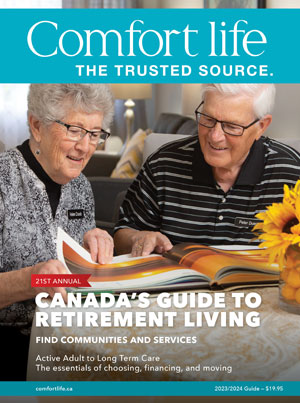RRSPs are a boon
In every year until December 31 of the year you turn 71, you can make a contribution to a Registered Retirement Savings Plan of 18 per cent of earned income, to a maximum of $13,500 a year, less pension adjustments. This can offer you more money in retirement and more savings to help alleviate retirement home costs for your family.
In the year you make the contribution, you get a tax deduction and the money earned within your plan - be it income from interest, dividends or capital gains - accumulates inside the plan tax-free. You don't pay tax on the money in the plan until you take it out. Presumably, you will then be in a lower tax bracket because you are retired.
It seems painless, but very few of us make the full RRSP contribution we're entitled to. According to Statistics Canada, Canadians aged 25 to 64 contributed $27.8 billion to their RRSPs in 2000, less than 10 per cent of the total contribution amount available.
One way to force some discipline on the RRSP process is to sign up for an automatic withdrawal plan through your financial adviser or institution. Each month, a set amount is withdrawn from your bank account and put into your RRSP, so you aren't faced with making one large contribution as tax time approaches.
Insurance products
Insurers, too, are taking note of Canada's changing demographics and introducing insurance products to help us face the financial challenges ahead.
Critical illness insurance, for example, generally pays out a tax-free lump-sum benefit after a serious illness or health condition is diagnosed. Since your chances of surviving a medical crisis are far greater today than in the past - 80 per cent of heart attack patients admitted to hospital survive - it means you don't have to dip into your savings to cover living expenses while you recuperate.
Long-term care insurance, on the other hand, provides a tax-free benefit if you suffer a long-term illness or disability. It can cover home care or the costs of living in a long-term care facility. Most insurance companies offer some kind of critical illness and long-term care insurance. But some policies cover only specific illnesses and conditions; others can limit how the benefits are used.
Be sure to read the fine print. Your insurance adviser can help you find an insurance package that fits your needs.
Manulife Financial recently launched an annuity product, the Manulife Nursing Care Income Plan. After making one up-front investment in the plan - such as rolling into it your RRSP, Registered Retirement Income Plan, a pension or non-registered savings - you receive a guaranteed lifetime monthly income. The plan requires a $25,000 minimum investment and you have to be 45 or older.
Home equity plans
Another route is the Canadian Home Income Plan (CHIP), which is administered by the federal government. CHIP registers a mortgage on your title and you receive a lump-sum payment of 10 per cent to 40 per cent of the appraised value of your home. You continue to own your home and when you sell the house or die, the mortgage is repaid. CHIPs are available at most financial institutions. Costs are involved, such as an administration fee, the cost of an appraisal and a title search.
CHIP does give you money to enjoy the early stages of retirement. But understanding the implications of the plan is important because it also uses up an asset that you might need in later years.
Any financial planning that you do ahead of time will make it easier for you to afford a retirement hme in Canada.




